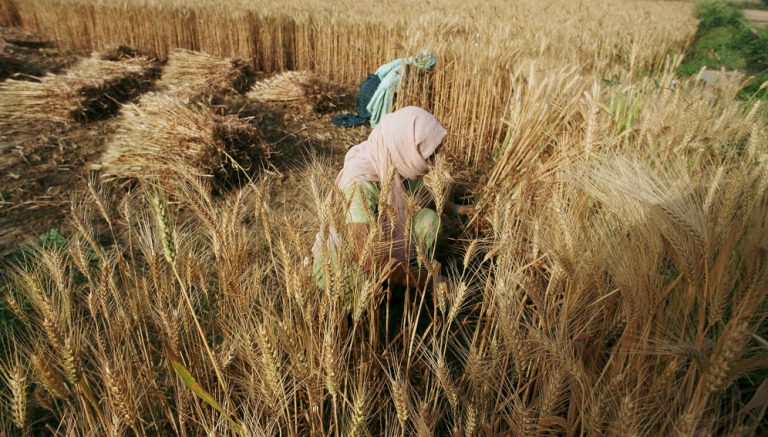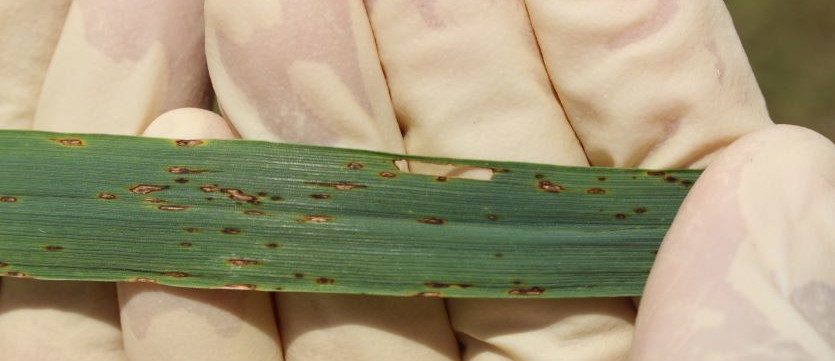
Genomic surveillance of fungal varieties can help control spread; Strategy follows surveillance of rapidly mutating COVID-19 variants
By Claudia Caruana
New York
Genomic surveillance of a fungal disease that is destroying wheat crops around the world may help control its spread, researchers suggest, taking a cue from the COVID-19 pandemic.
Wheat blast disease is described by the International Maize and Wheat Improvement Centre (CIMMYT) as a “deadly and baffling fungal foe”. It infects the spikey head of the crop, causing bleaching, and can result in the loss of entire yields.
Genomic surveillance involves systematically following changes in the genetic codes of a disease-causing pathogen to track and control its spread.
A study published in PLOS Biology found that the technique can be deployed in the fight against Magnaporthe oryzae, the fungal pathogen that causes wheat blast disease.
“We have seen how the wheat blast fungus can potentially interact and mate with other infecting lineages which can have implications for many staple cereal crops.”
Sergio Latorre Ochoa, University College London
“Genomic surveillance adds a unique dimension to the coordinated response to infectious disease outbreaks,” said Sophien Kamoun, study co-author and researcher at the UK-based Sainsbury Laboratory, citing COVID-19 as a prime example.
Genomic surveillance emerged as a vital tool during the COVID-19 pandemic to identify and track the transmission of new variants.
Researchers looked at how it can be applied to wheat blast after the emerging disease spread to Africa and Asia from South America, with outbreaks in Bangladesh (2016) and Zambia (2018).
First reported in Brazil in 1985, wheat blast disease spreads through infected seeds, crop residues and spores that can travel long distances in the air.
“We need to remain vigilant and continue genomics surveillance of wheat blast in Africa and Asia to identify variants of concern as soon as they emerge,” added Kamoun.
Johanna Rhodes, a research fellow at Imperial College London who was not involved in the study, says wheat blast disease is an even greater threat to wheat crops than the war in Ukraine.
“Wheat is a staple food for 35 per cent of the world’s population, so a disease that threatens pandemic potential could cause serious food security implications,” she told SciDev.Net.
Rhodes estimates that 25 per cent of this wheat is used for livestock and industrial uses, “so just cutting down on bread won’t help! The next pandemic may not hit humans directly but indirectly, by targeting crops”.
In the study, the researchers used genetic data collected internationally through the OpenWheatBlast collaboration.
“Thanks to the prompt and public release of genomic data by the international scientific community through the OpenWheatBlast initiative, we were able to detect, track, and characterize the fungal lineage responsible for recent wheat blast outbreaks,” said lead author Sergio Latorre Ochoa from University College London.
“This community was fundamental in rapidly sharing observations and genomic data related to the recent outbreaks of wheat blast in Asia and Africa, enabling us in a matter of days to draw hypotheses about the potential implications of a pandemic outbreak.”
To better understand emerging genotypes and lineages, the researchers genotyped and sequenced the genome of the pandemic wheat blast fungus and tested different lines of wheat for genetic resistance to blast fungus and susceptibility to fungicide.

“We have seen that a single clonal lineage of the blast fungus is responsible for the recent outbreak episodes in Africa and Asia,” explained Latorre.
“By studying and characterizing this pathogenic lineage, we could identify two short-term firebreak strategies to manage and alleviate the spread of the fungus by demonstrating plants carrying a specific resistance gene (Rmg8) display resistance and showing that Strobirulin fungicides can be effectively used to control the fungal spread.”
Latorre stresses, however, that the researchers have not found the silver bullet.
“The blast fungus still carries the ability to mate counterparts that infect different types of wild grasses which could create new variants that enhance the virulence,” he added.
“This clonal lineage can potentially become resistant to Strobirulin fungicides by the sole action of new mutations.”
Further studies, the researchers say, are needed to address the likelihood of crop diseases evolving resistance to pesticides and fungicides and to evaluate other potential strategies that reduce reliance on chemical inputs.
Latorre emphasizes that the blast fungus is a multi-host pathogen which can infect multiple plant hosts including rice, millets and different grasses important both for human and animal consumption.
“We have seen how the wheat blast fungus can potentially interact and mate with other infecting lineages which can have implications for many staple cereal crops,” he explained.
The researchers say that use of genomic surveillance coupled with testing in the laboratory can help inform disease management practices and help plant breeders develop disease-resistant crops.
Nick Talbot, executive director of The Sainsbury Laboratory, who was not directly involved in the research, says the work highlights the urgent need for genomic surveillance of plant pathogens “for many of the same reasons we needed genomic surveillance of COVID-19”.
“Dominance of the wheat exports by a small number of countries [such as Russia and Ukraine] places inherent vulnerabilities on the global food system.
“This is exacerbated by the intensifying threats for climatic instability on wheat export potential due to heat, drought, heavy rains, plus the increasing prevalence of certain diseases.”
__________________
Courtesy: Sci. Dev. Net (Posted on April 17, 2023)